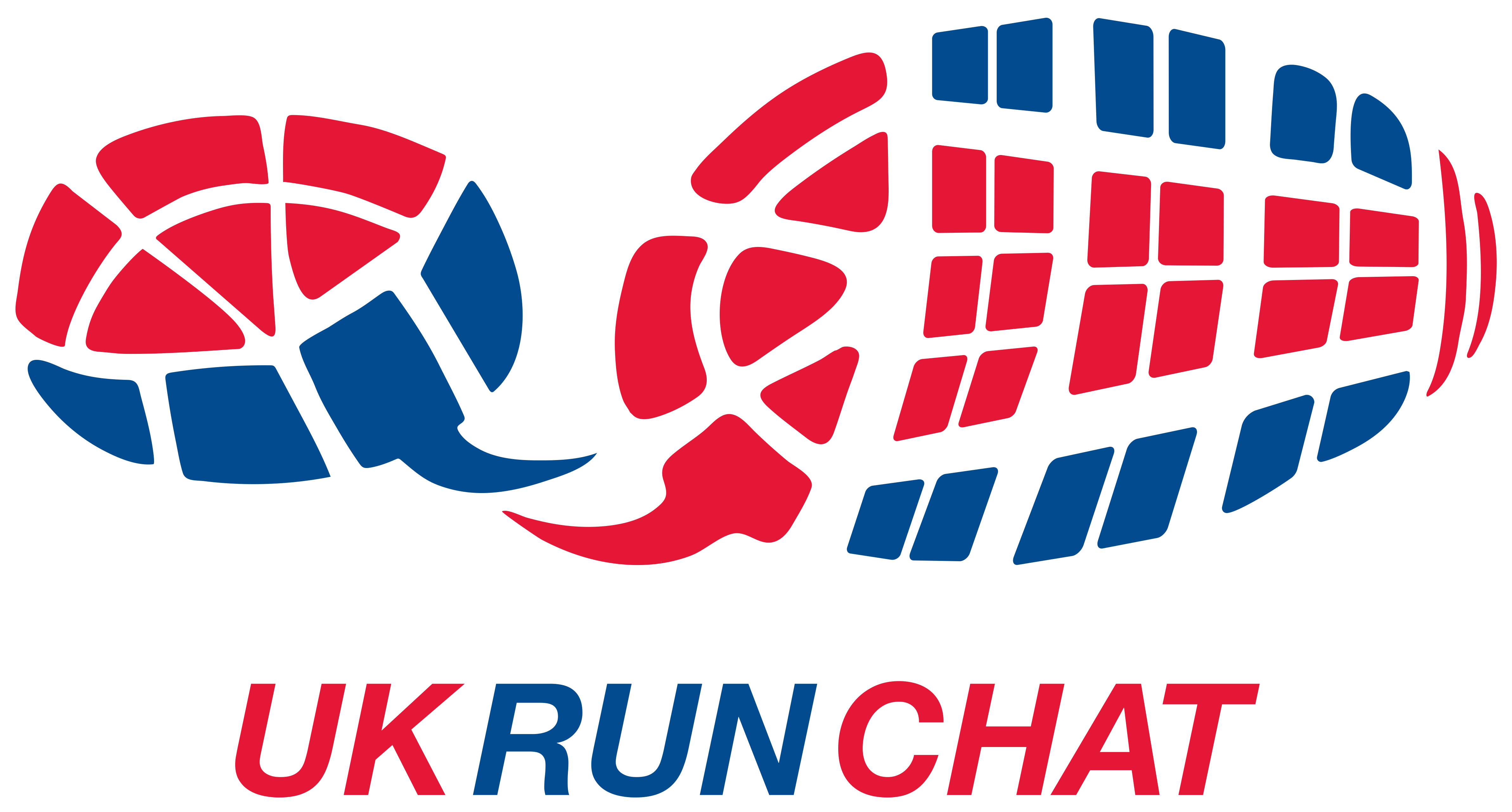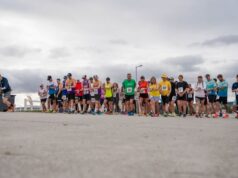A blog by @_jen_mo
Post-Edinburgh
I’ve seen a lot of people talk about post-marathon blues & not having much motivation to get out & run after a marathon. I took a bit of time off after the London Marathon last year and as I have other things to train for I was hoping that my enthusiasm would stay with me after Edinburgh Marathon.
My legs weren’t too bad after the marathon. I definitely think all the walking at Edinburgh Castle the day after helped with recovery. I took myself out for a short easy run on the Wednesday to make sure my legs were still working as I was going to the #ukrunchat weekend in Eastbourne. I was feeling great over the Eastbourne weekend & did lots of running, including a 5k PB at the parkrun, which surprised me a lot as it was less than a week after Edinburgh.
The following week (after Eastbourne) I felt unstoppable. I fitted in a few runs & did a run commute a couple of days in a row. I’d done 8 runs that week & my pace was quicker than normal. I was feeling great. That was till the Friday evening. I’d run to work that morning, then around 9pm at work my heel started to feel like it was bruised. I didn’t have long left at work & had a run home planned so I decided to get on with it & as I run the bus route at that time of night I figured I could always hop on a bus if it gave me problems. I felt ok on the run home but was aware of a bruising feeling on my right heel.
Plantar Fasciitis?
Once I stopped running it felt pretty painful & I was hobbling around throughout the weekend. I hate limping as there’s always someone that enjoys telling me how bad running is for you. I did the nurse at work on the Saturday morning as it was so painful & just for peace of mind that I hadn’t done anything serious. She thought it may be Plantar Fasciitis, I’d already guessed it may be that from the sound of other cases on twitter & online.
I took Ibuprofen and used my little spikey ball on my foot twice a day, as well as a frozen bottle of water to roll my foot on as well as calf stretches as tight calf muscles can cause heel issues. I was determined that I won’t let this stick around for long.
I have had a copy of ‘Ready to Run’ by Dr. Kelly Starrett and T.J Murphy for ages & haven’t read it so I finally picked it up & started to read it. It’s a great book & I would recommend that everyone gets a copy. It tells us that the 1st thing most people will blame is the shoes when what we should actually be doing is addressing the problem and doing regular maintenance work on ourselves. We should be spending 10 minutes a day working on different areas to enable us to pursue a lifetime of running. The final chapter of the book is about common injury problems and what we can do to recover from them – Plantar Fasciitis is listed and I immediately started doing the exercises he recommends.
Not Plantar Fasciitis
I kept up with the exercises but I missed them over the weekend as I was too busy having fun. I should have taken 10 minutes to do my exercises, especially as I spent most of Saturday in some rather high heels at a friends wedding. Once Monday cam around I my heel was still sore so I booked myself in to see my Osteopath. I saw him yesterday and it actually isn’t Plantar Fasciitis, it’s some swollen fatty tissues in my heel that need some time to heel (not easy when spending time on my feet is obviously essential for walking & working etc etc). Although I’d thought it was the wrong thing all of the exercises I’d been doing were right. My Osteo did some stretching & massaging & lasered my foot (see below for more information). I was sent home to rest it & last night I sat with some frozen veg & a hot water bottle alternating them on my heel. It’s strapped up too. I go back for some more lasering today & will then have a follow up appointment next week.
Not running sucks
It is frustrating not being able to run, especially when I was feeling so motivated & felt like my running was getting better & stronger. But I know that this won’t last for long and I’ll soon be back out there doing my training for the Berlin Marathon in September.
I highly recommend you all get a copy of ‘Ready to Run’. I will be following the 10 minutes a day rule as I want to be able to run for a long time & avoid injuries. I am sure I will keep turning back to this book for advice.
I also recommend you see a professional when you get injured. Seeking advice online is great but without someone seeing you & assessing your individual case it is impossible to know exactly what is wrong. There are a whole host of things that can cause similar issues, for example: heel pain can be caused by Plantar Fasciitis; weak hips or calf muscles; a caught nerve ending; heel striking during running; poor midline stability; and the list goes on. Once you have been given a proper diagnosis they can help you on the road to recovery. My Osteopath is awesome, I got back from my ITB injury earlier in the year pretty quickly, & I am sure this heel issue won’t last long either. It isn’t as expensive as you’d expect and you can always see a doctor to get a referral. It’s definitely worth it so you can get properly recovered.
Thanks for reading & have a great week. Hopefully the next blog will involve an actual run x.
A note on laser therapy
It’s not as scary as it sounds. I had it for my ITB too. You’re given protective eyewear to put on & you don’t feel anything. Here is some more information from the Rebalance Clinic:
“What is Musculoskeletal Laser Therapy?
Laser Therapy is one of the most technologically advanced forms of medical treatment for pharmaceutical free pain relief. It is the use of light (red & infrared) at specific wavelengths to produce therapeutic effects including: reduced pain, improved local circulation, accelerated healing, decreased inflammation and swelling.
What are the key benefits of Laser Therapy?
- Faster recovery & repair
- Fast reduction in pain level
- Fast reduction in swelling
Can Laser Therapy help me?
Laser therapy can be used across a diverse and wide range of ages and conditions*:
- Soft tissue injuries – muscle and ligament strains
- Tendon injuries – tendonitis and tendinopathies
- Joint pain – overuse, arthritis
- Sport & repetitive stress injuries
- Chronic musculoskeletal pain – low back, neck, shoulder pain
- Inflammation & swelling – acute or long term conditions such as osteoarthritis or rheumatoid arthritis
- Nerve pain – carpal tunnel syndrome, trigeminal neuralgia, fibromyalgia
- Headaches – tension and cervicogenic headaches
Also a recognised treatment for:
- Plantar fasciitis
- Chondromalacia patellae
- Diabetic neuropathy
- Herpes zoster (shingles)
- Deep oedema / congestion
- Venous ulcers
- Diabetic foot ulcers
- Burns
* This list is not exhaustive, laser therapy can help with many conditions, after an initial assessment we will always tell you if we think it will or will not help you.”




